Planting for Native Birds, Bees and Butterflies
Notes provided by Jaclyn Crupi.
Local author and presenter Jaclyn Crupi gave a talk on her new book: Planting for Native Birds, Bees and Butterflies on 30 August 2025. The following except from Jaclyn’s book covers the core topics of layers and habitat types. For more information on creating habitat gardens buy or borrow Jaclyn’s new book.
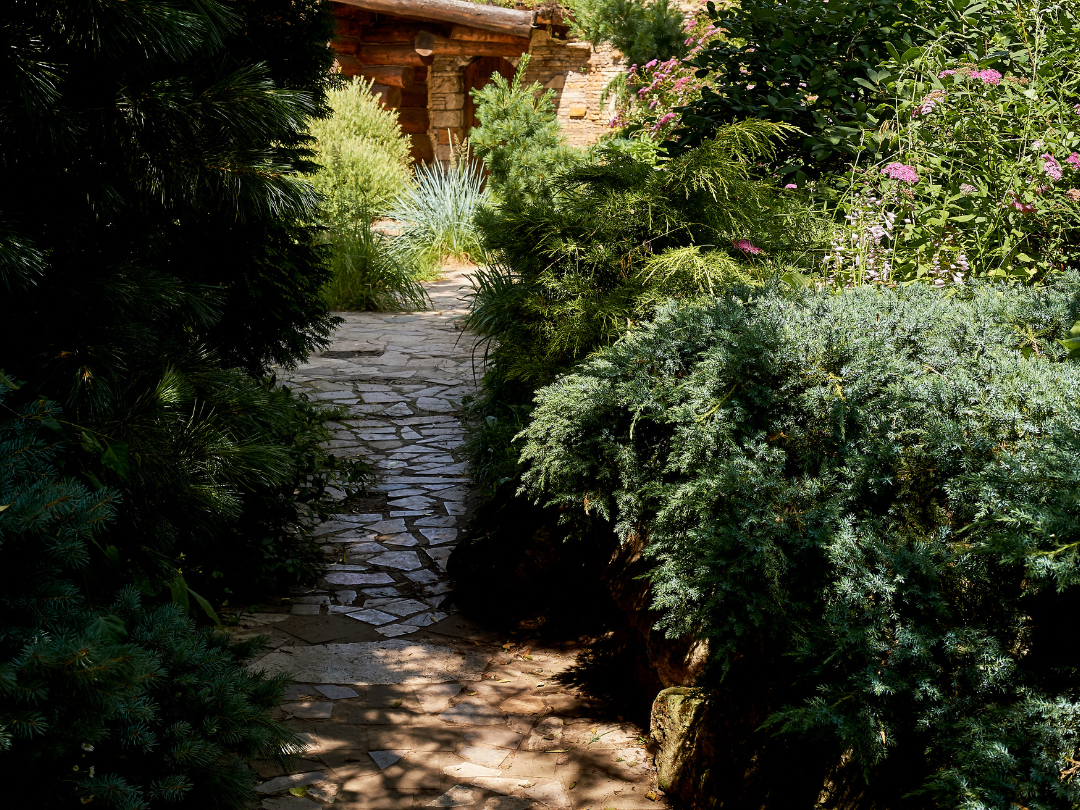
Look at Layers
The trick to habitat planting is to think about your garden in terms of layers. The top layer consists of the canopy formed by trees (assuming you have the space for this layer). In the middle layer are small and medium shrubs, and this layer is essential if you want to attract and protect small birds. The bottom layer comprises ground covers, grasses and wildflowers. If insect- and bird-attracting plants are used, then these three planting layers can provide everything that these creatures are looking for, including safety from predators.
A key part of habitat is not only what you plant but also how much you plant. If you want to attract small birds and reptiles, then dense plantings are needed. For small birds, it’s all about protection in the shrubby middle layer. They like spiky plants – such as hakeas, banksias and bursarias – because these offer extra security. To make the plantings dense enough, they should contain at least two plants per square metre, factoring in each layer from the canopy to ground covers. If cost is a deterrent, then you could buy one or two of each plant and propagate or divide them (see pages 56–7) so you have more plants to add to the garden once they’re established.
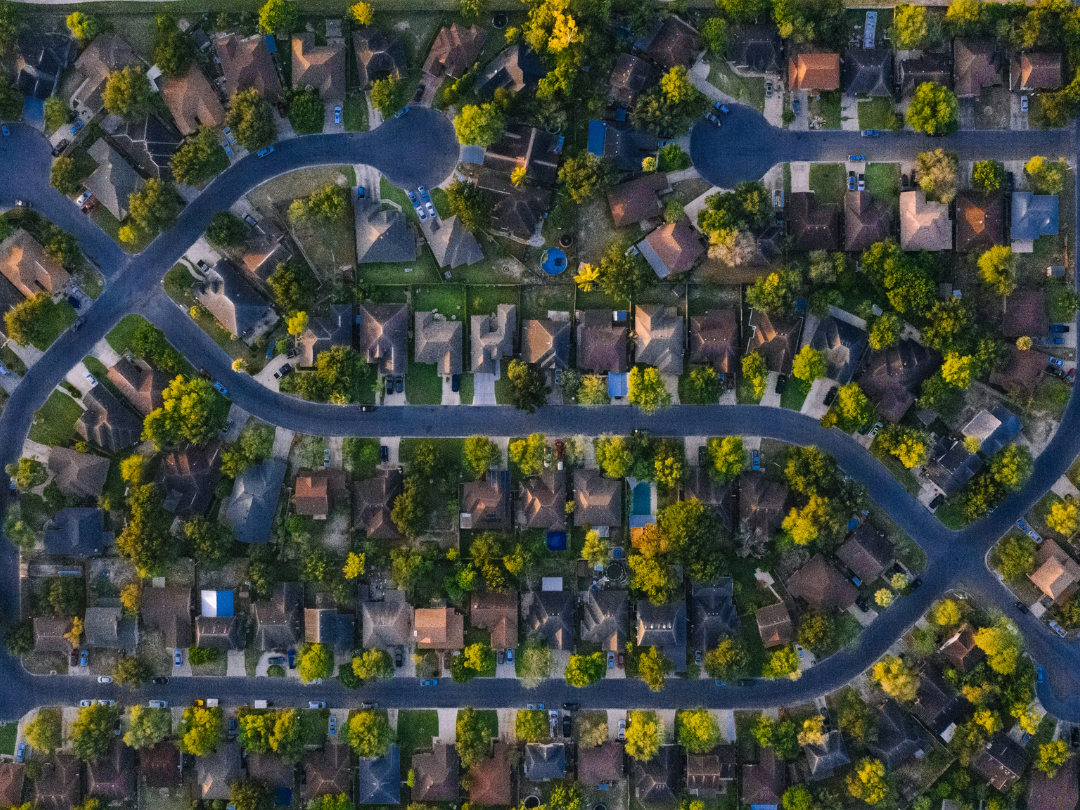
You are not alone
It can help to think about your garden in relation to the green spaces around you. Your patch doesn’t have to fulfil all of the needs of every native bird, bee and butterfly species in the area – it can simply add to the mosaic of habitat available to wildlife. What you plant will attract birds and insects to your place, but collectively with neighbours’ gardens, community gardens, street trees, bush areas, parks, wildlife reserves and all the green spaces in your area, you’ll supply everything these creatures need.
Top layer
This is the tree canopy, and its size will be determined by the space in your garden. For example, a small garden may only have one small tree (or no trees at all); a large garden can incorporate a grove or orchard. It can take many years to establish this layer, so plant big trees as soon as you can. Choose species that do well in your area; healthy trees are less likely to drop limbs or die. If you have a canopy formed by existing trees, then consider leaving them in situ and planting around them.
Middle layer
This consists of shrubs and medium-sized perennials, and it’s essential for attracting small birds. Tip prune shrubs as they grow to create a bushier, denser planting at this level. When I do this, I imagine that I’m a wallaby nibbling the delicious new growth.
Bottom layer
Grasses, ground covers and small flowering plants make up the lowest layer in a garden planting. They protect the soil, suppress weeds, act as mulch and provide hiding places for skinks and other lizards as they travel through the garden.
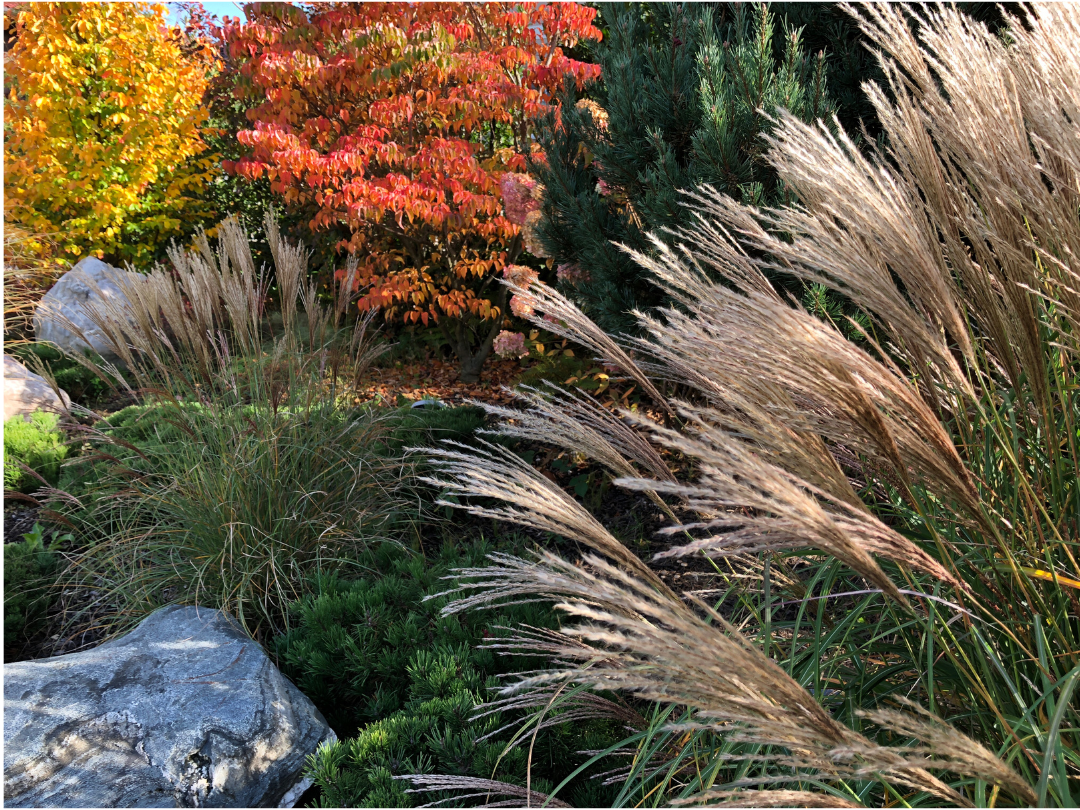
Three cheers for trees
As the saying goes, the best time to plant a tree was 30 years ago, and the second-best time is right now. Plant trees – lots of them if you can. And, even more importantly, don’t remove any established trees unless absolutely necessary. Our native animals cannot wait another three decades for all of the things that an existing tree provides. Removal should be a last resort, and only if the tree is diseased or dying and is becoming dangerous, or if it’s an invasive weed.
Include Different Habitats
A densely planted garden is wonderful, but you can – and should – provide more than just plants in your garden for native wildlife. Access to water encourages a greater diversity of creatures to visit. Habitat elements such as rotting wood, dead leaves and large rocks can add visual interest to the garden and will soon become havens for a variety of creatures.
Aquatic areas
If you add a small (or large) pond to your garden, then you’ll drastically increase the number of insect species that visit your garden as well as welcome local frogs and potentially native fish. By creating a pond with different depths, you can provide habitat for a variety of small and large animal and plant species. To learn how to build a frog pond, see pages 150–6.
Soil and rocks
Several species of native bee and wasp nest in burrows in bare clay soil. Immature native burrowing bees often overwinter in deep nests in the ground. Leave some soil mulch-free so that these bees and wasps have somewhere to sleep.
Rocks in sunny spots are ideal places for butterflies, skinks and other lizards to warm their bodies. They also provide handy hide-outs for geckos. If you need a retaining wall, then building one out of rocks will provide valuable reptile real estate (remember: location, location, location!). It will also last a lot longer and look more attractive than a retaining wall made from treated pine, for example.
Leaf litter and logs
Woodchip mulch, leaf litter, twigs, dead plants and logs all provide habitat and food sources. Fallen leaves trap moisture and create the perfect living conditions for many insects, such as beetles, ants, crickets, snails and centipedes – ideal foods for lizards, frogs and many birds. Lizards and some frogs enjoy living in the moist soil beneath rotting logs.
Woodpiles
Carefully stacked (or even haphazardly strewn) firewood provides habitat for a range of creatures. Chopped up logs and branches attract fungi and, from there, you’ll welcome spiders, beetles, wasps, lizards and slugs. And who eats those guys? You guessed it: native birds. By simply keeping an outdoor woodpile to be used for heating or cooking purposes, you’re providing habitat and food for wildlife in the interim. You might come across these critters when you carry logs inside for the fireplace, but that’s all part of creating a balanced ecosystem.
Ideally, place your woodpile in a shady spot to stop it from drying out and to provide the cool conditions required by fungi and insects. Stacking wood into a stable structure is an art form, and there are various ways it can be done, so find the one that works for you – the fungi and critters won’t mind how you do it.
Places for nesting
Tree hollows provide essential nesting spots for native birds. If your mature trees don’t have any natural hollows, then an arborist can create artificial hollows in the trees or you can build and install nesting boxes. To learn how to create nesting boxes for different bird species, see pages 98–101. Many native bees nest in dead hollow stems, so never feel bad if you’re late to prune or remove spent vegetation. Stingless native bees can be kept in boxed hives.
Vertical surfaces
Many insect- and bird-attracting plants can be grown up fences and balcony walls. These plants can screen unattractive views and provide privacy, while also offering food and shelter to native insects and birds. Native sarsaparilla (Hardenbergia violaceae) is an easy-to-grow climber that has rich purple or white flowers from winter to spring. Leafcutter bees require broad, soft leaves for their nests, and native sarsaparilla or climbing roses are perfect for this purpose. Native rosemary (Westringia fruticosa) hedges provide useful habitat for native birds and butterflies.
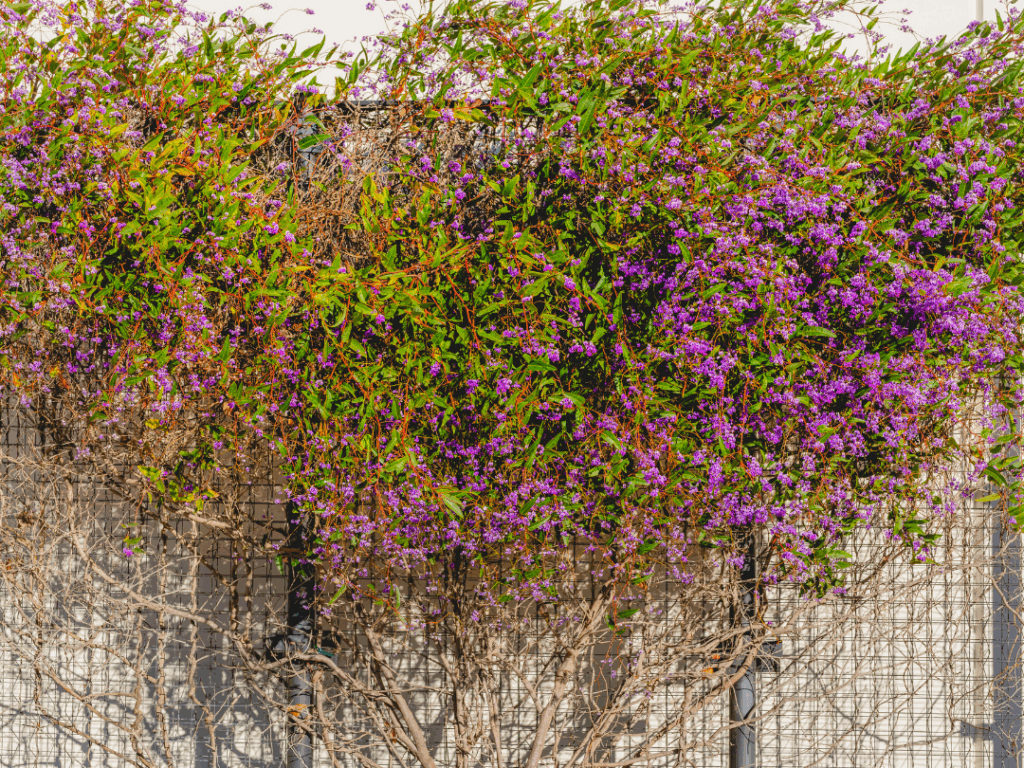
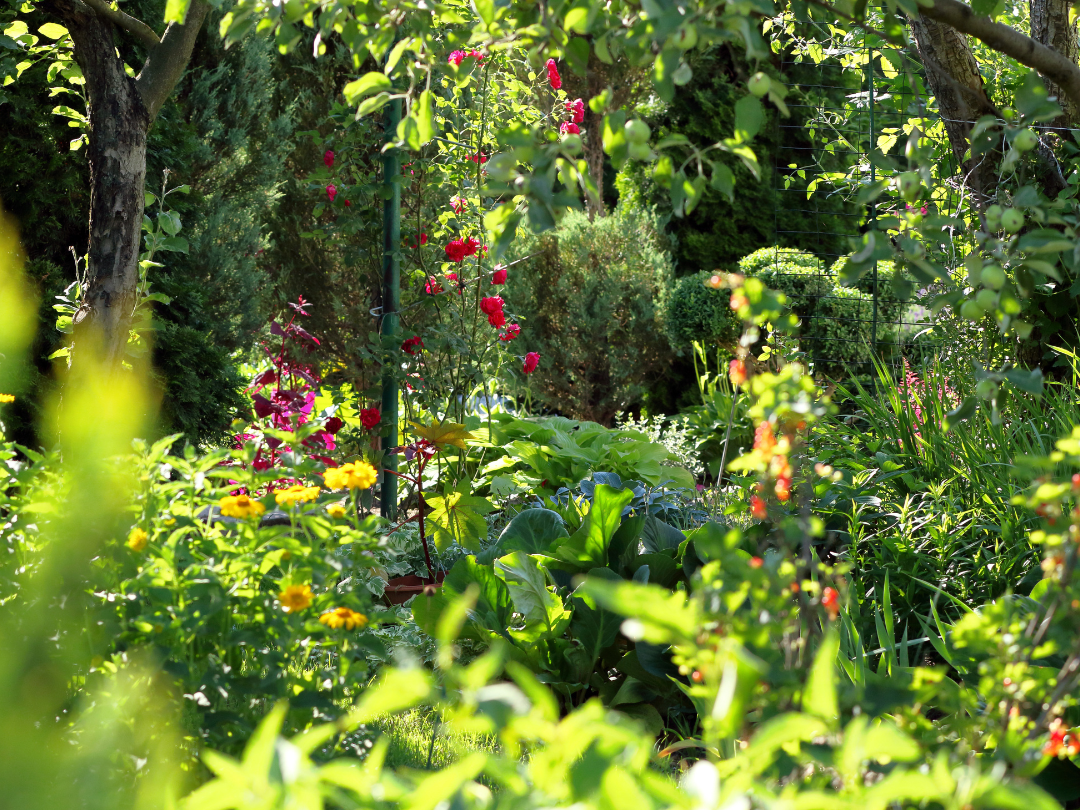
Consider What Creatures Need
Think about plants in terms of what they can offer to native birds, bees and butterflies. The six necessities are:
- nectar
- pollen
- seeds
- larval butterfly food
- nesting materials (birds and bees)
- protection from predators
Have this list in mind when deciding which plants to include in your garden. You can, of course, add plants that don’t provide these things – remember, the more plants you have, the better your garden will be at providing refuge for insects and birds.
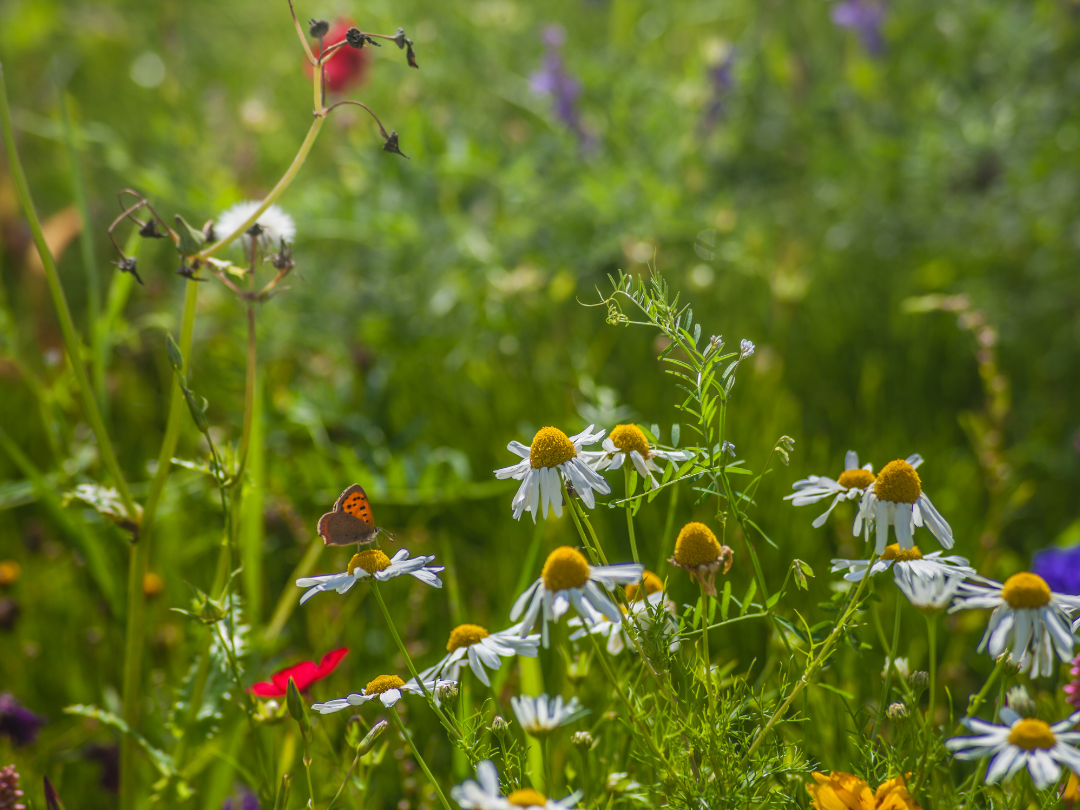
The food chain
One thing that soon becomes clear in a habitat garden is the importance of maintaining a strong food chain. It might sound brutal, but it’s vital to attract insects, gastropods and small reptiles to your garden as nourishment for larger omnivorous wildlife that is higher up the food chain. A garden that provides for nectar feeders, insect eaters, leaf eaters, sap suckers, seed eaters and all of their predators is both well balanced and biodiverse.


